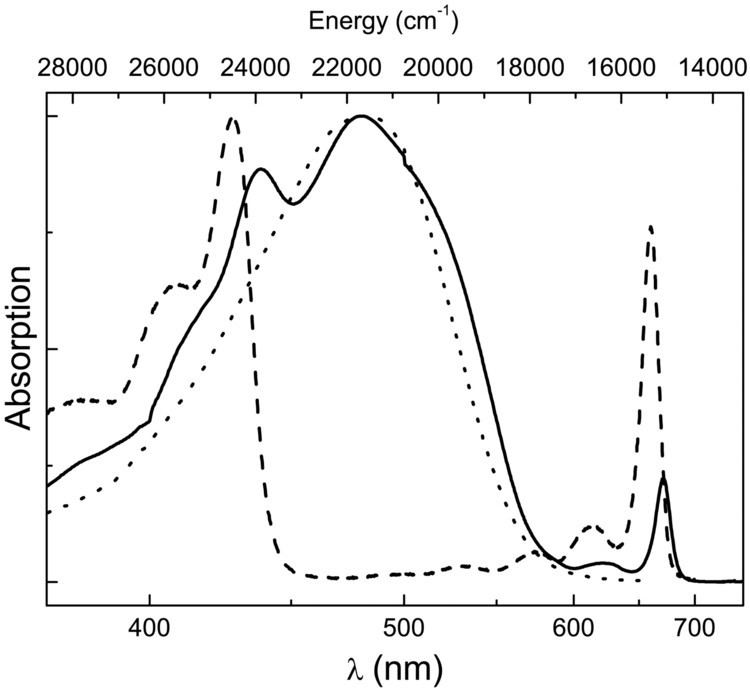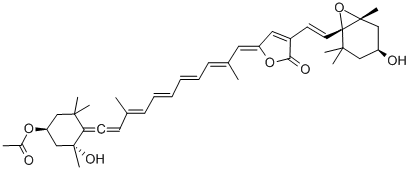Formula C39H50O7 | ||
 | ||
What does peridinin mean
Peridinin is a light-harvesting apocarotenoid, a pigment associated with chlorophyll and found in the peridinin-chlorophyll-protein (PCP) light-harvesting complex in dinoflagellates, best studied in Amphidinium carterae.
Contents

Biological significance

Peridinin is an apocarotenoid pigment that some organisms use in photosynthesis. Many photosynthetic dinoflagellates use peridinin, which absorbs blue-green light in the 470-550nm range, outside the range accessible to chlorophyll molecules. The peridinin-chlorophyll-protein complex is a specialized molecular complex consisting of a boat-shaped protein molecule with a large central cavity that contains peridinin, chlorophyll, and lipid molecules, usually in a 4:1 ratio of peridinin to chlorophyll.
Spectral characteristics
Applications

Peridinin chlorophyll (PerCP) is commonly used in immunoassays such as fluorescence-activated cell sorting (FACS) and flow cytometry. The fluorophore is covalently linked to proteins or antibodies for use in research applications.
